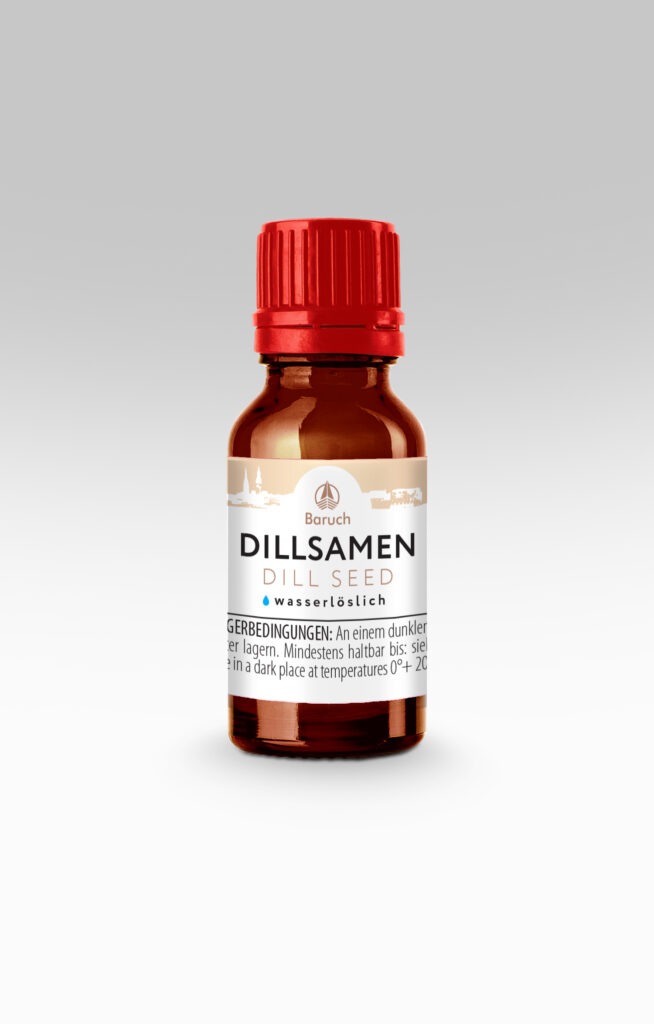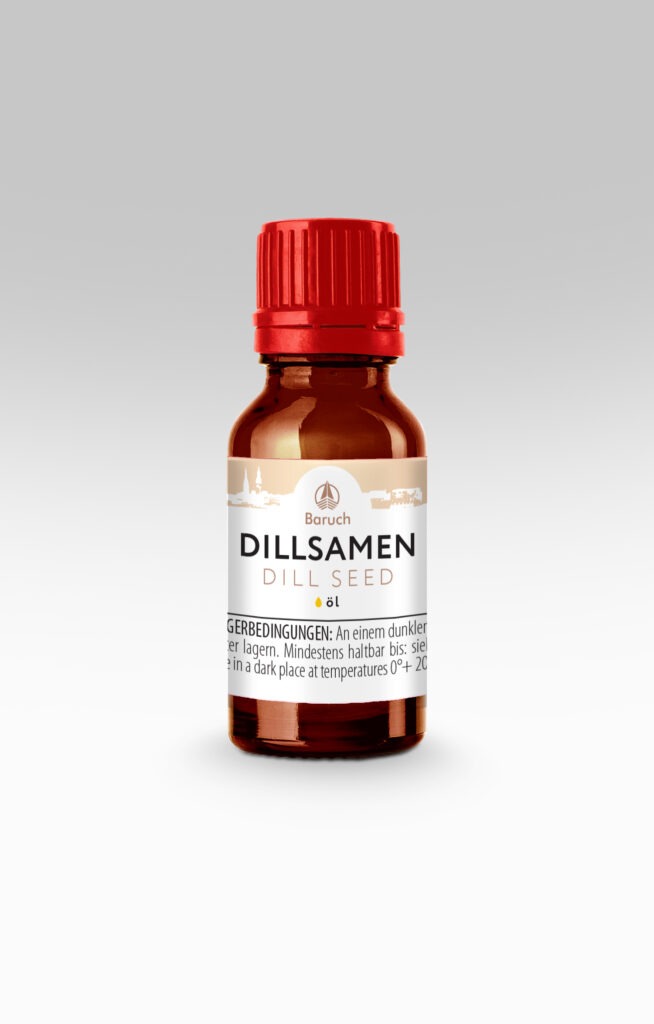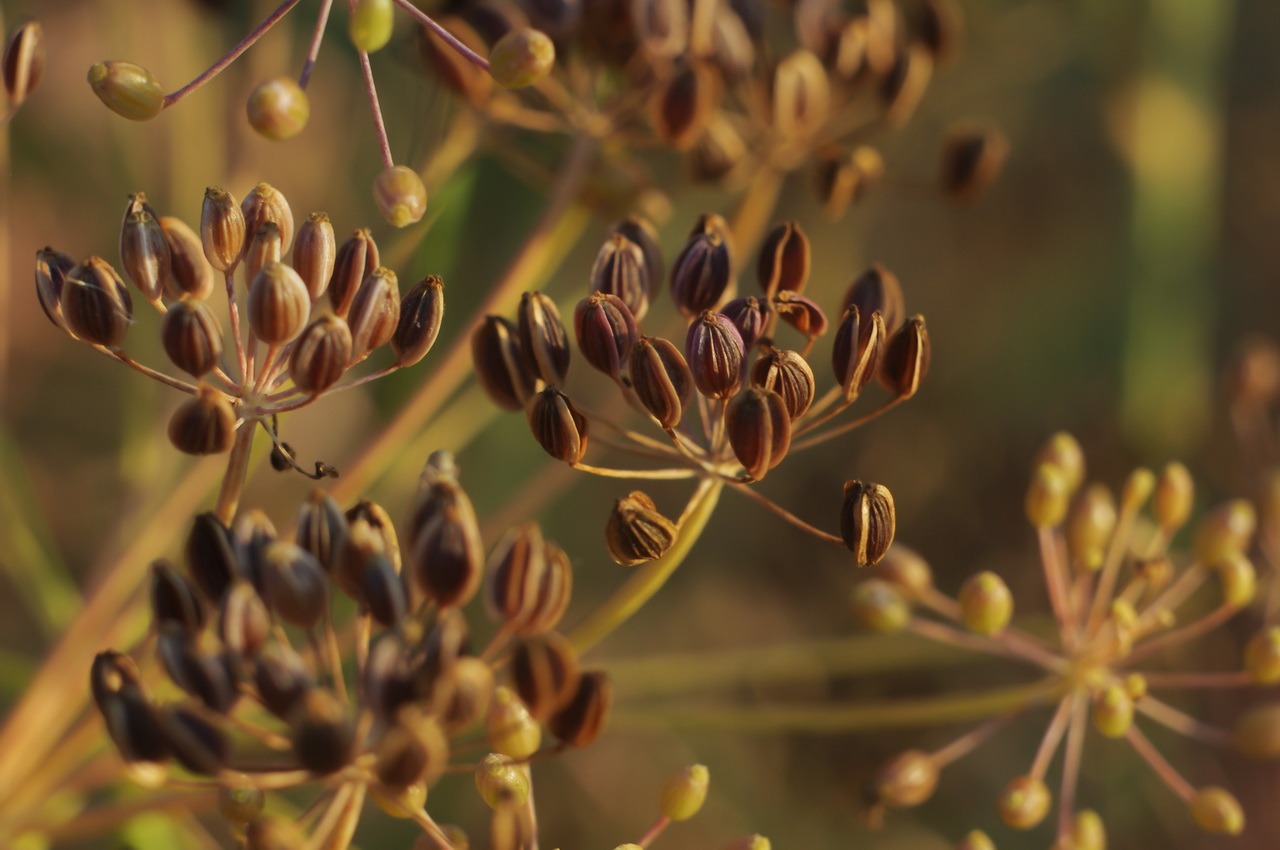Dill (Anethum graveolens) is an annual herb in the celery family Apiaceae. It is the only species in the genus Anethum. Dill is grown widely in Eurasia, where its leaves and seeds are used as a herb or spice for flavouring food.
Dill oil and CO2 extract from dill seeds are used in cooking. Dill is used in various dishes, marinades, in the preparation of meat, fish, canned vegetables, aromatic vinegar and alcoholic beverages.
The CO2 extract from dill has proven to be a popular additive to fermentation products – kefirs and especially kvass. It is part of the mixes “With Dill” and “Borodinsky”. It is found in the formulations of a wide variety of sauces and ketchups, as well as dressing oils.
In official medicine, preparations based on dill oil and thus CO2 extract are recommended to improve the functioning of the digestive organs, increase appetite and normalize metabolic processes. Dilute extract and oil contribute to weight loss in obesity, improve liver and gallbladder function. Dill seed extract has an antispasmodic and calming effect.
CO2 extract from dill “Biozevtika” is a light yellow, oily liquid with a pleasant, pronounced, characteristic odor. In the course of gas chromatographic-mass spectrometric investigations, several hundred compounds were analyzed in their composition, of which more than 50 were identified.


Chart 1. The main ingredients of the CO2 extract of dill
| NAME | CONTENT IN% OF THE AMOUNT OF VOLATILE COMPONENTS | EFFECT |
|---|---|---|
| Palmitic acid | 10 | Unsaturated fatty acid for water repellency in cosmetics |
| α- and β-linolenic acid | 2,1 | Unsaturated, essential fatty acids from the class of omega-3 fatty acids. It has a membrane protecting, angioprotective effect. Immunomodulatory, improves brain metabolism |
| β-carotene | 1,8 | Provitamin A, a powerful antioxidant especially in combination with unsaturated fatty acids |
| Linoleic acid | 1,3 | An essential unsaturated fatty acid of the omega-6 class. It has anti-inflammatory, vasoconstrictor, and aggregating effects. If there is no balance between omega-3 and omega-6 fatty acids, competitive processes can arise that influence the metabolism |
| Carvone | 32 | It is used as a flavoring in the food industry, cosmetics and perfumery |
| Limonene | 1,2 | Effective against fungi, mold and bacteria. Perfume scent. Effective repellant. Not recommended in cosmetic preparations for sensitive and allergy-prone skin |
| Alfa-felandren | 1 | Used in medicine to treat viral and respiratory diseases. Used as a fragrance in cosmetics and perfumery |
| Alpha-pinene | 0,8 | Easily penetrates the epidermis and irritates the nerve endings, which leads to intense blood circulation. Causes expectorant and expectorant effects |
| Camphene | 0,7 | Used as a substitute for camphor and for its synthesis, as the basis for the production of a wide variety of aromatic compounds |
| Querticin | 0,4 | Shows antiviral, antimicrobial, anti-inflammatory, antineoplastic and antiallergic properties. It is one of the most active antioxidants. Slows down the aging process |
In cosmetics based on CO2 extract from dill, products are made for:
- Toning mature skin
- Remedies for the signs of aging
- helps smooth out wrinkles
- Treating acne
- brightens age spots
The presence of β-carotene (provitamin A) and a complex of monounsaturated and polyunsaturated fatty acids (vitamin F complex) in the CO2 extract of dill offers:
- hypoallergenic effect
- stimulates and participates in collagen synthesis
- Restoration of the barrier functions of the epidermis and stratum corneum
Chart 2. Application rates, recommendations for the use and storage of CO2 extract from dill
| Food usage rates | Item А100: 0.003% (30g per ton) Water-soluble microemulsions EMA1: 0.3% (3l per 1000l or 3ml per liter) |
| Application rates in cosmetics | Item А10: 1-3% Item А100: 0.1-0.3% |
| Recommendations for use | It is recommended to add CO2 extracts in the final stages of preparation, in the cooling phase of the end product. |
| Storage Instructions | It is recommended to store CO2 extracts in a closed container in a cool room and avoid direct sunlight. |
